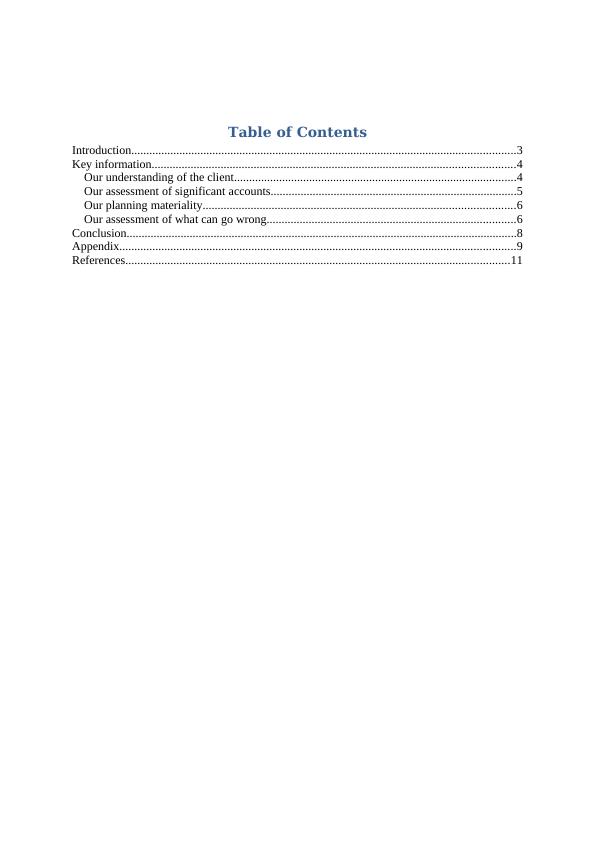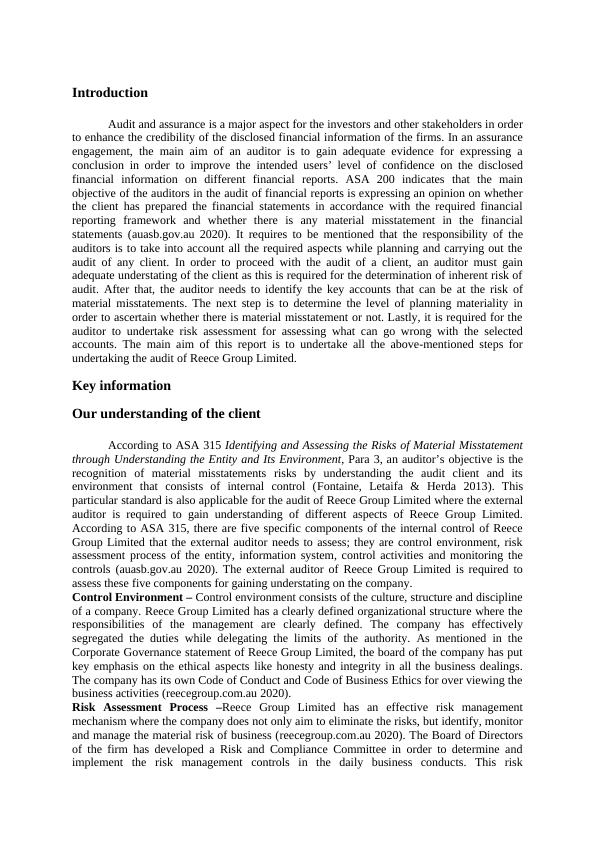PLAGIARISM POLICY | ASSIGNMENT1
This chapter study focuses on the procedures performed as part of the engagement wrap-up, assessing the going concern assumption, evaluating misstatements, evaluating conclusions obtained during the audit, and understanding the components of an audit report.
12 Pages4211 Words12 Views
Added on 2022-08-28
PLAGIARISM POLICY | ASSIGNMENT1
This chapter study focuses on the procedures performed as part of the engagement wrap-up, assessing the going concern assumption, evaluating misstatements, evaluating conclusions obtained during the audit, and understanding the components of an audit report.
Added on 2022-08-28
ShareRelated Documents
End of preview
Want to access all the pages? Upload your documents or become a member.
School of Accounting and Finance
|17
|4440
|13
Planning an Audit for Financial Statements - Accounting
|10
|2015
|135
Auditing and Ethics: Analyzing the Annual Auditor Report for Air New Zealand Limited for the Year 2017
|11
|2640
|500
Audit Risk Assessment Procedures Rules and Guidelines
|11
|3373
|325
Analyzing Financial Performance of Beautiful Products Ltd
|9
|1572
|102
Professional Auditing: Audit Plan for Konekt Limited
|17
|3814
|299




